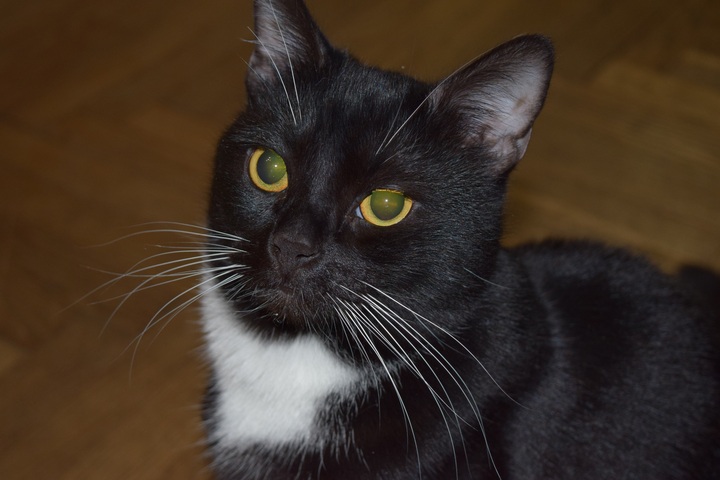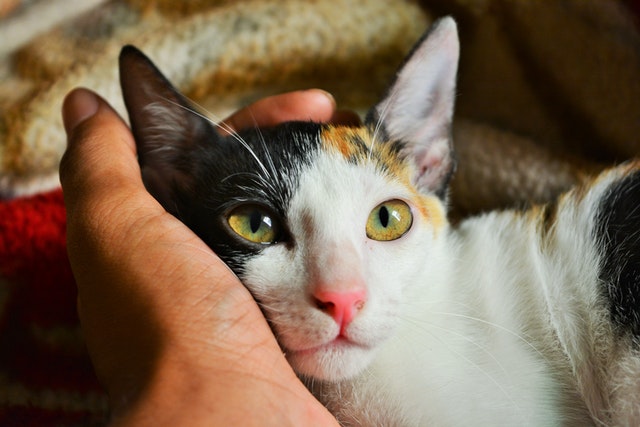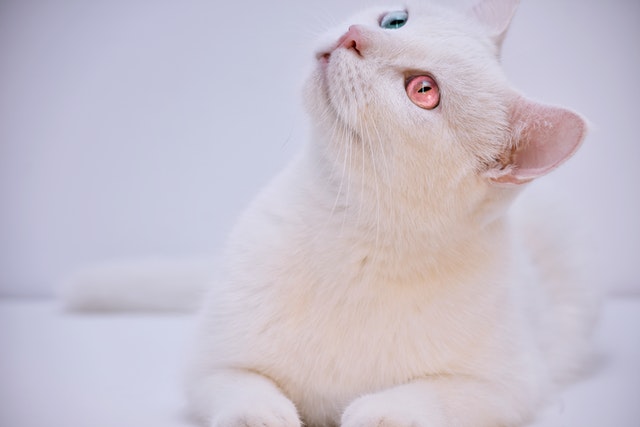Pet Insurance Review > Pet Wellness Guides > The Most Common Eye Problems in Cats - Pet Insurance Review
The Most Common Eye Problems in Cats
Posted: 06/14/2022 | BY: Jenna Bruce | Categories: Cat , Health problems , Pet care , Vets
If you have cats, you know that cat eyes are some of the most beautiful things on the planet. It’s hard not to stare into our cat’s eyes and get a little lost in their beauty. But as beautiful as cat eyes are, they can become diseased, making life challenging for our fur babies.

This article will cover some of the most common eye problems in cats as well as some common treatment protocols.
Cat Eye Infections
One of the most common eye problems in cat eyes is an eye infection. These infections tend to be viral in nature, and many cats will have multiple eye infections over the course of their life.
Cat eye infections are typically brought on by stress and other health conditions. They can present as a “one and done”, meaning your cat gets one eye infection and then may never get another one, or at least not for many years. However, eye infections are usually never that simple.
Cats that have a history of eye infections should definitely be seen by their vet within a few days of the symptoms coming on. Cats with no history of eye infections should be seen ASAP, preferably within 24 hours once symptoms are visible.
Conjunctivitis/Pink Eye in Cats
Like people, our feline companions can also develop conjunctivitis in one or both eyes. This conditions describes when the tissues surrounding the cat’s eye become irritated and inflamed. In severe cases, the conjunctiva – the tissue surrounding the eye – can become so inflamed that it becomes hard to even see your cat’s eyeball.
It can be difficult for a vet to determine what has caused pink eye in your cat, because there are a variety of triggers. Cats with pink eye should be seen by a vet within 24 hours of symptoms. Your vet will most likely prescribe anti-inflammatory medications and conduct some tests to determine what caused the inflammation.
Corneal Ulcers in Cats
A corneal ulcer refers to a scratch on the cornea, or clear surface of your cat’s eye. Cats with these ulcers often squint or duck when you try to pet their head or face. Their eye may also drain often and appear red and inflamed.
Cat corneas can become scratched in a number of ways. Aggressive playing with other cats or dogs in the house, debris getting into their eye, and long whiskers that can continue to poke at the cornea.
These ulcers can become infected quickly, so if you suspect your cat’s cornea may have gotten scratched, get them in to see your vet as soon as possible.
Cloudy Eyes in Cats

When cornea scratches go unnoticed or treated, the cornea can eventually swell and become cloudy. Cloudy eyes can also be a symptoms of other cat eye diseases. As soon as you notice any clouding of your cat’s eyes, make an appointment to see your vet.
Retinal Issues in Cats
Retinal issues are quite common in cats and are usually the result of another health problem that causes hypertension (high blood pressure). Hyperthyroidism and kidney disease are the two most common health conditions in cats that causes high blood pressure and retinal issues.
When a cat has high blood pressure, it can cause rupturing of small blood vessels in the retina, which can then cause the retina to completely detach, causing blindness.
The most common symptom of this eye condition is when a cat seems to suddenly lose her sight and her pupils look dilated, no matter how much light is shining in her face. If your cat should exhibit this symptoms, seek treatment immediately. Even delaying treatment for just a few hours can result in permanent vision loss.
Glassy Eyes in Cats
Glassy eyes in cats is a sign that their eyes are tearing excessively. This tearing generally happens when a cat’s eyes are inflamed and in pain. Keep an eye on your cat should they develop glassy eyes. Sometimes the cause resolves itself quickly, such as when they accidentally scratch their eye when cleaning or playing with another cat. But should their eye(s) remain glassy over a 24-hour period, you’ll want to take them into the vet to get checked out.

Goopy Eyes/Discharge in Cats
It’s perfectly normal for your cat to have a bit of discharge in the corner of their eye. This discharge will usually be brown in color and slightly moist. Many people confuse this discharge with dried blood, but it’s perfectly normal.
Having said that, if your cat’s eye(s) has a lot of discharge, or more than normal, if it is of a creamy consistency and coming from other areas of the eye instead of that corner closest to the nose, this may be an indication that something else is going on. Should you see this, you’ll want to get your cat into the vet within 48 hours.
Cataracts in Cats
Cataracts develop when the lens of your cat’s eye thickens, creating a cloudy appearance. This clouding is different than the clouding of the cornea, where you can’t even see into the eye.
Cataracts form when the lens of a cat’s eye thickens. This creates a “marble-like” effect or “clouding” inside their eye. This is different from clouding of the cornea, where you can’t even see into the eye.
Luckily, cataracts are not as common in cats as in dogs. But be aware that some cats can develop this condition due to age, genetics, and other diseases such as diabetes. Cataracts can be surgically treated, although since they develop slowly over time, most cats adapt to the slow vision loss.

Give Your Cat the Very Best Care
We all want our cats to stay healthy for the duration of their life. But sometimes things happen that are out of our control. No matter how good of care you provide your cat, they may wind up developing one of these cat eye problems, or one that wasn’t listed. Should this happen, you’ll want to be sure you can give your fur baby the absolute best treatment options.
Unfortunately, vet care can be quite costly, leaving some pet owners unable to provide their baby proper treatment. This just shouldn’t happen, which is why we started Pet Insurance Review.
We’re pet owners who want to help other pet owners provide the best care for their dog or cat. We find the top pet health insurance providers in the market so you never struggle to pay a vet bill. Did you know some providers can reimburse you for up to 90% of the vet bill?
Don’t let high vet bills stop you from providing the care your cat deserves. Get a free quote today.
References:
- Adams, C. (2022). 8 Types of Cat Eye Colors and Their Rarity. Retrieved from: https://excitedcats.com/types-of-cat-eye-colors/
- Understanding Viral Cat Eye Infections. Retrieved from: https://www.vetinfo.com/viral-cat-eye-infection.html
- Ward, E. DVM. Corneal Ulcers in Cats. https://www.vetinfo.com/viral-cat-eye-infection.html
- Detached Retinas in Cats. Retrieved from: https://www.vetinfo.com/detached-retina-in-cats.html
Disclaimer
The information contained on this blog is intended for informational and educational purposes only and should not be construed as medical advice. It is not a substitute for professional veterinary care. Always consult with your veterinarian before making any changes to your pet's health care or treatment plan.
The authors of this blog are not veterinarians and do not claim to be experts in pet health. The information provided here is based on our own experiences and research, as well as information from reputable sources. However, we cannot guarantee the accuracy or completeness of this information.
We encourage you to do your own research and consult with your veterinarian before making any decisions about your pet's health.